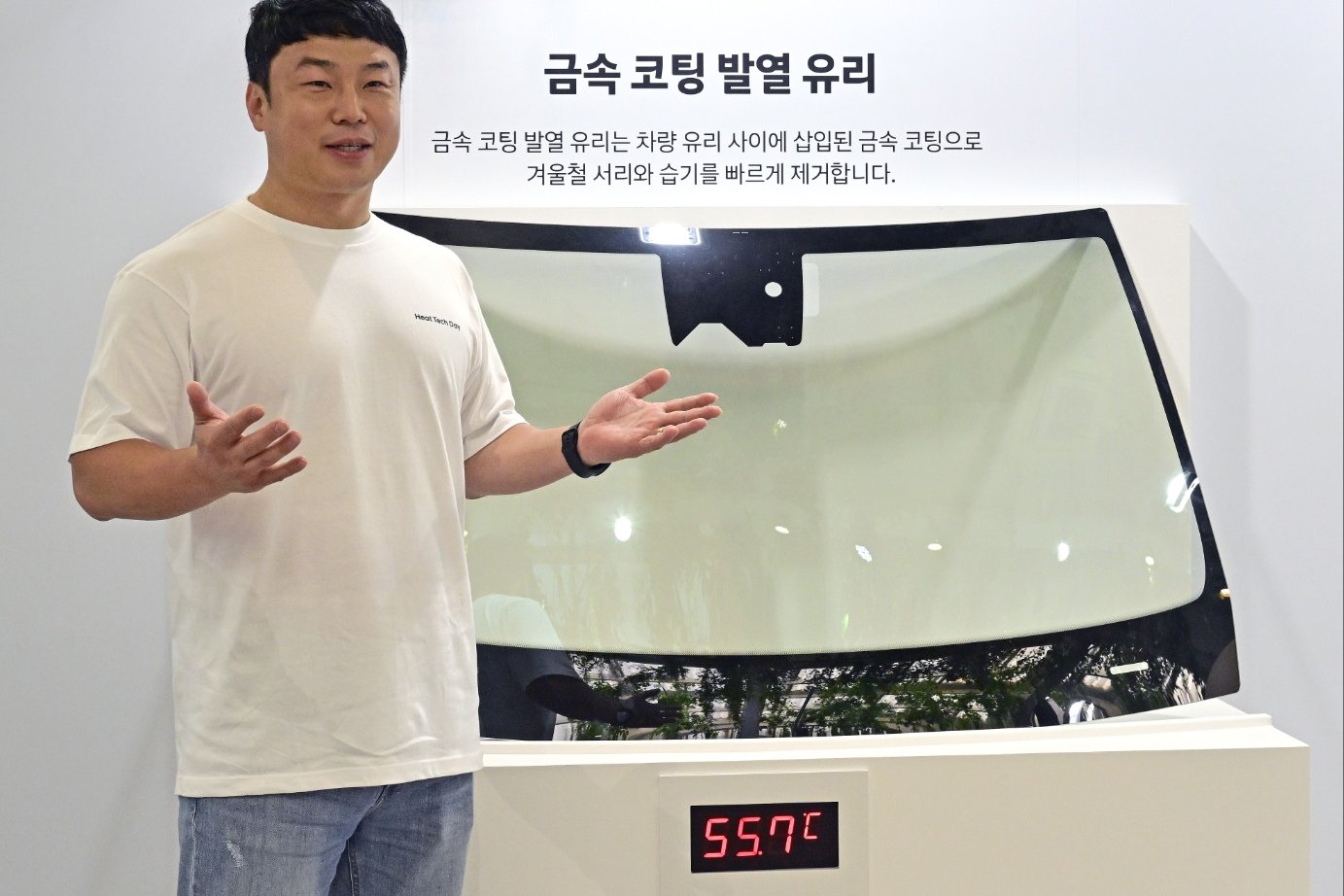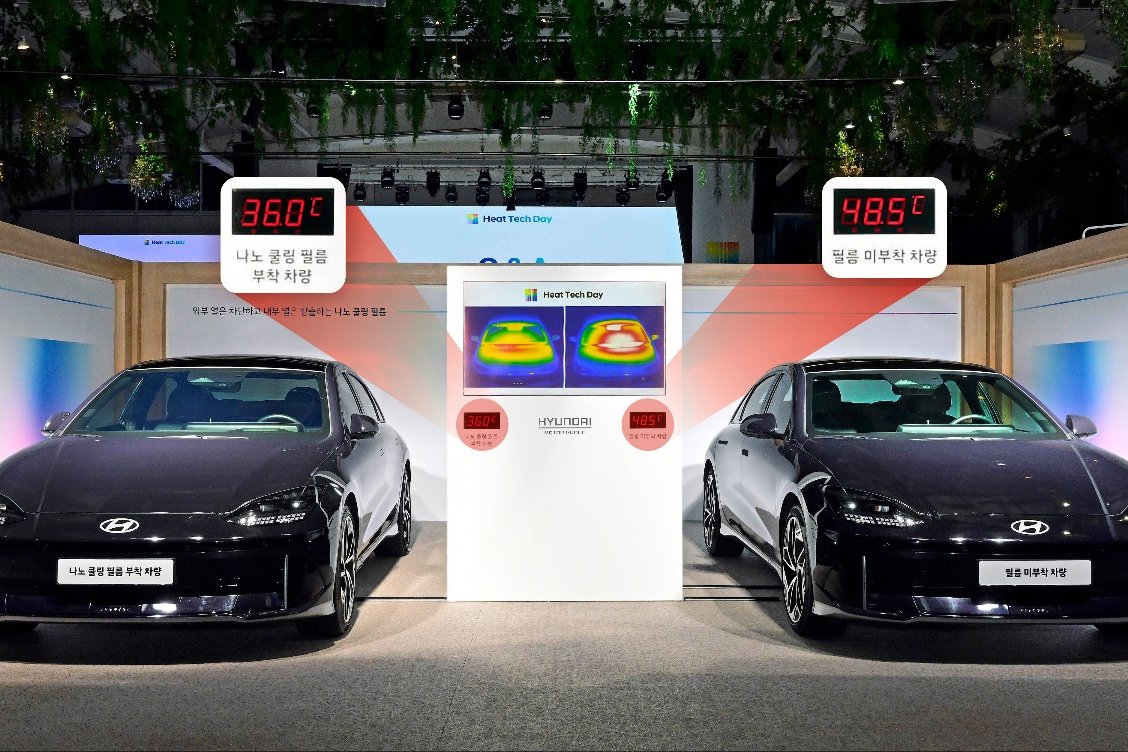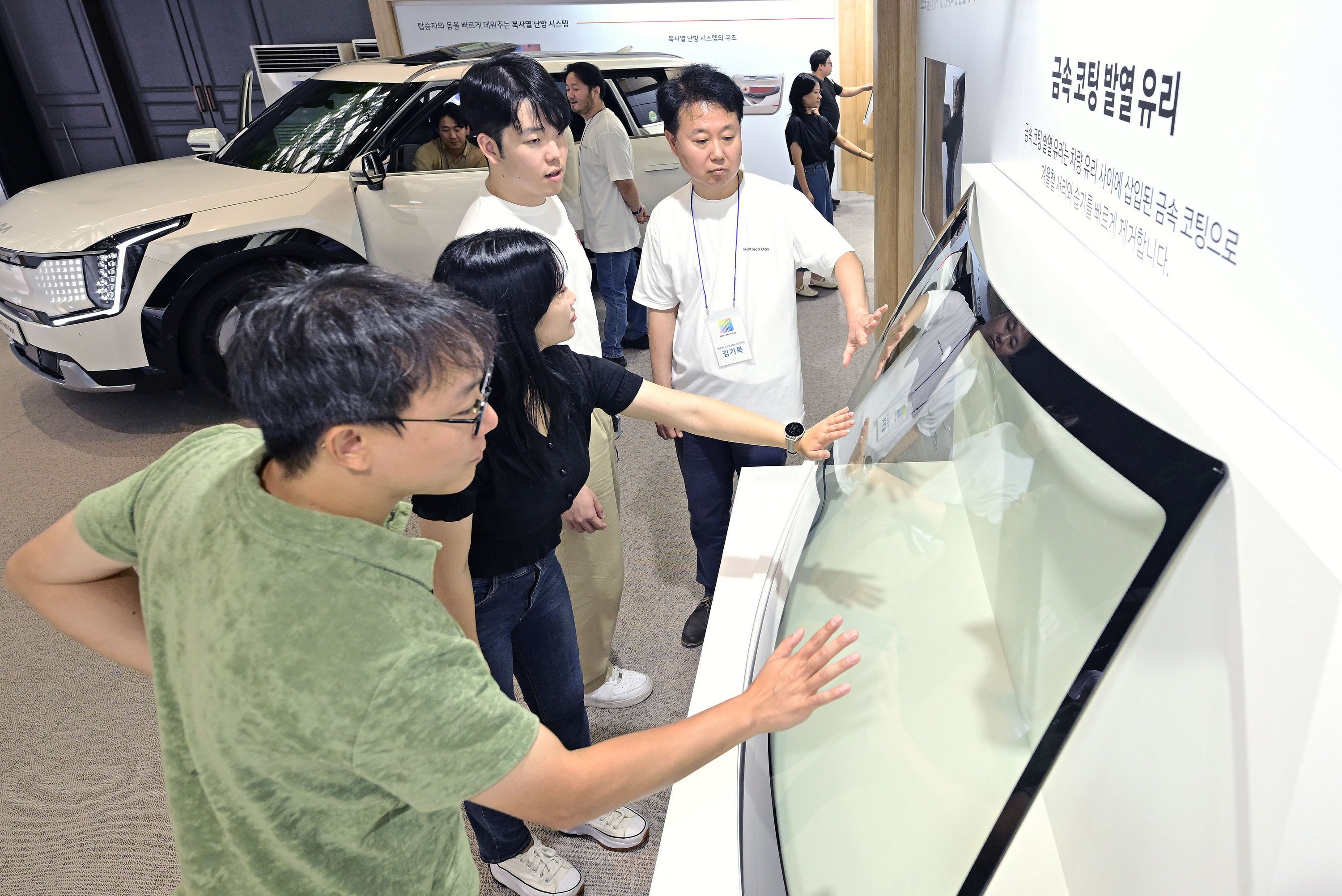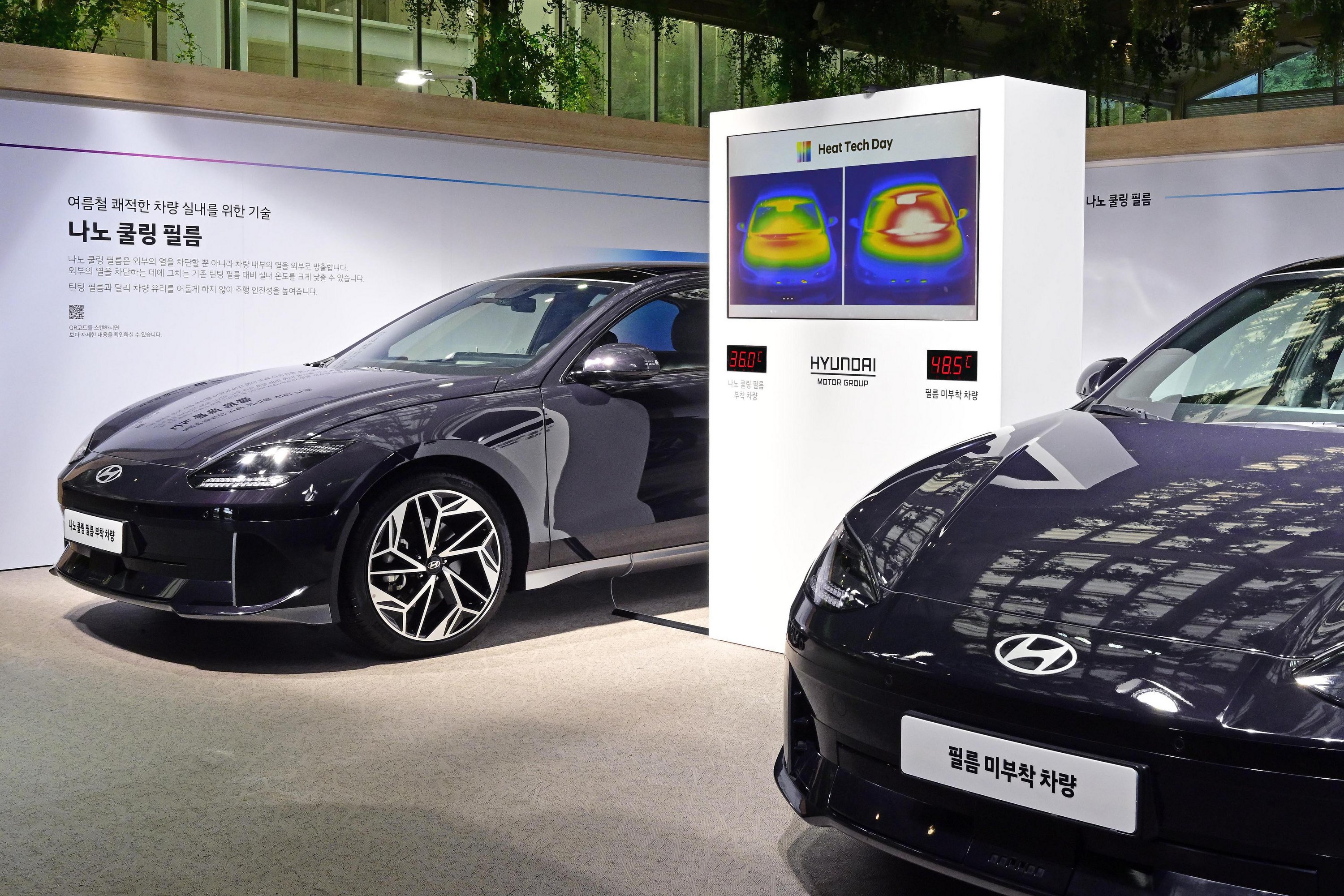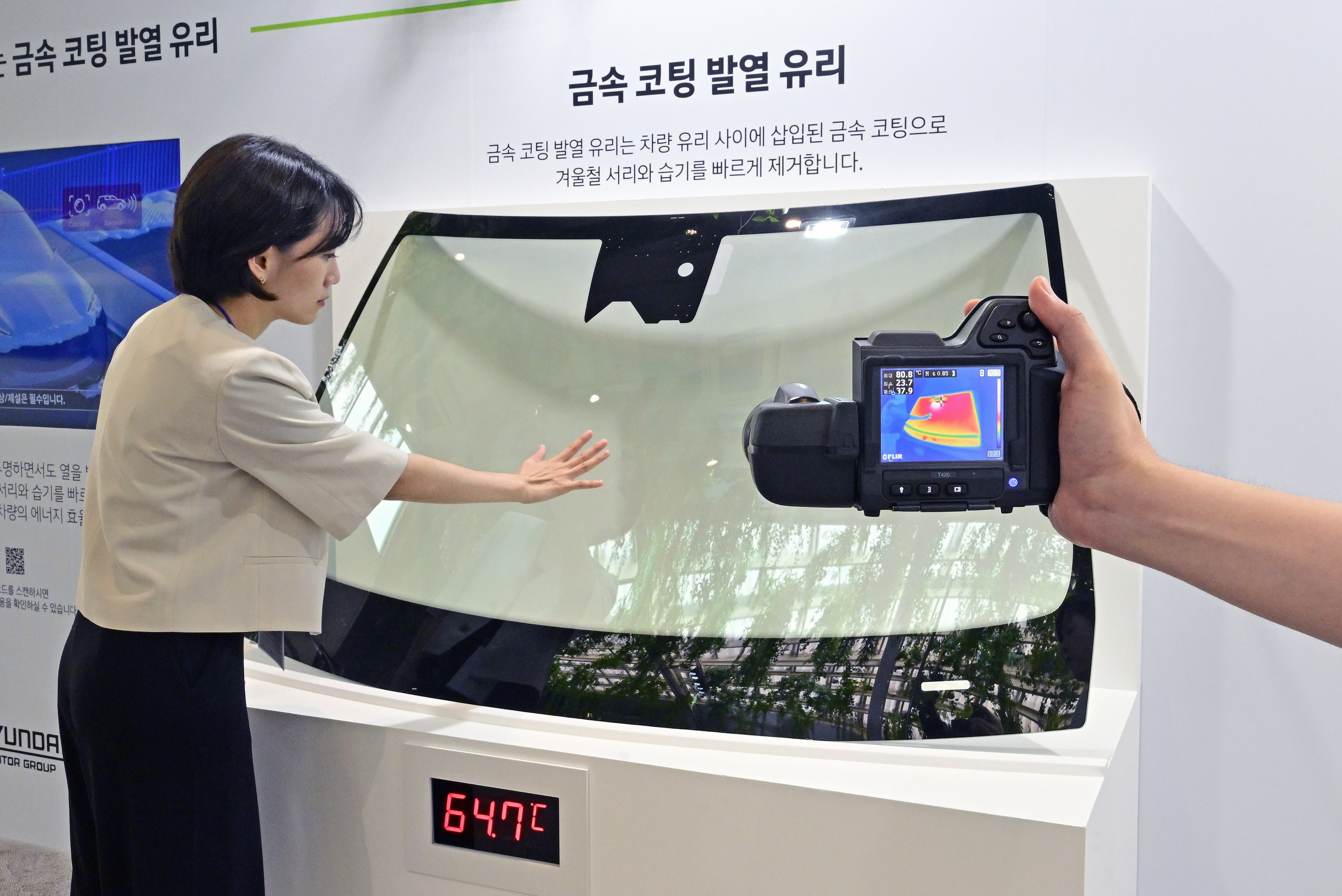
The nano-cooling film, developed a year ago and then tested for half a year in Pakistan, promises to make the passenger space up to 12 degrees Celsius cooler – precisely because the temperature in the country bordering India can reach over 50 degrees Celsius in the summer. However, for public safety reasons, the use of tinting films that can be stuck to car windows is prohibited, so an effective heat-reflecting solution was particularly important there.
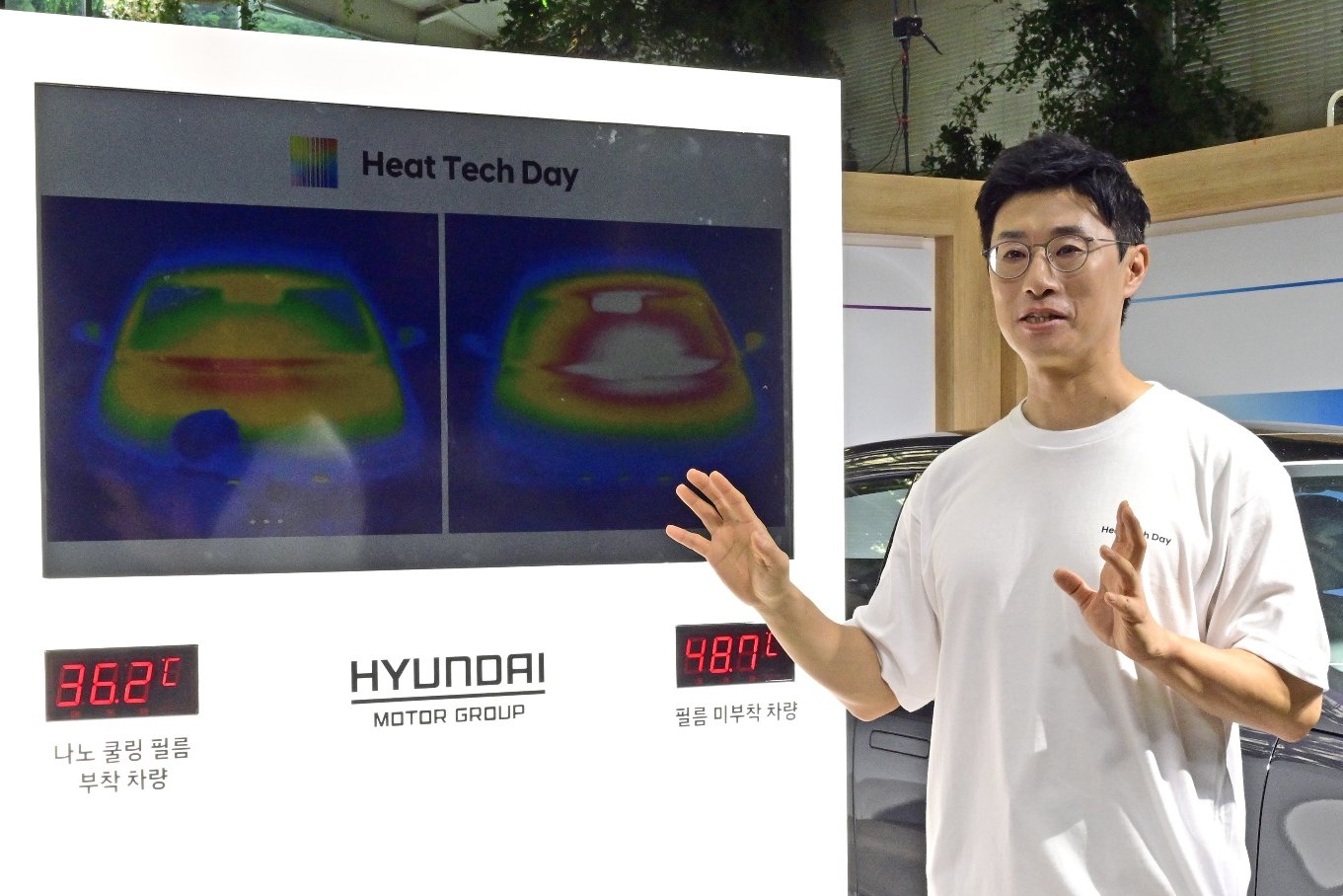
The Hyundai team applied the experimental film to 70 cars, and it proved to be very effective, with temperatures measured to be more than 10 degrees Celsius lower in the passenger compartment of the treated cars.
At the “Thermal Technology Day” held this summer in Korea, very specific measurement results were presented: 36°C was measured in the passenger compartment behind the transparent foil, which reflects infrared radiation but allows the heat in the passenger compartment to escape freely, while in the reference vehicle without foil the temperature was 48, and the average temperature was 5°C.
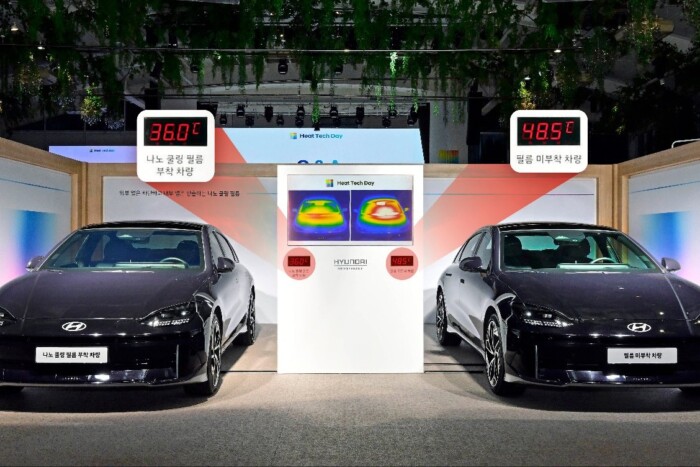
The film actually consists of not one layer, but three: one reflects infrared radiation, while two others deflect solar radiation from the passenger cabin in the surrounding wavelength ranges.
According to tests, the nano-cooling foils can be applied without any problems even on existing foils, i.e. they can also be used on dark side windows.
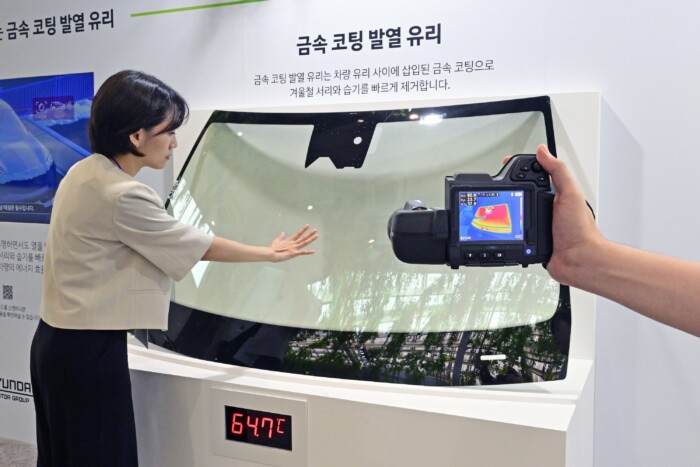
It would be better, of course, if Hyundai could team up with Nissan, which recently introduced a specially designed paint material that reduces the heat transfer capacity of body panels to a similar extent.
source: Hyundai Motor Group





